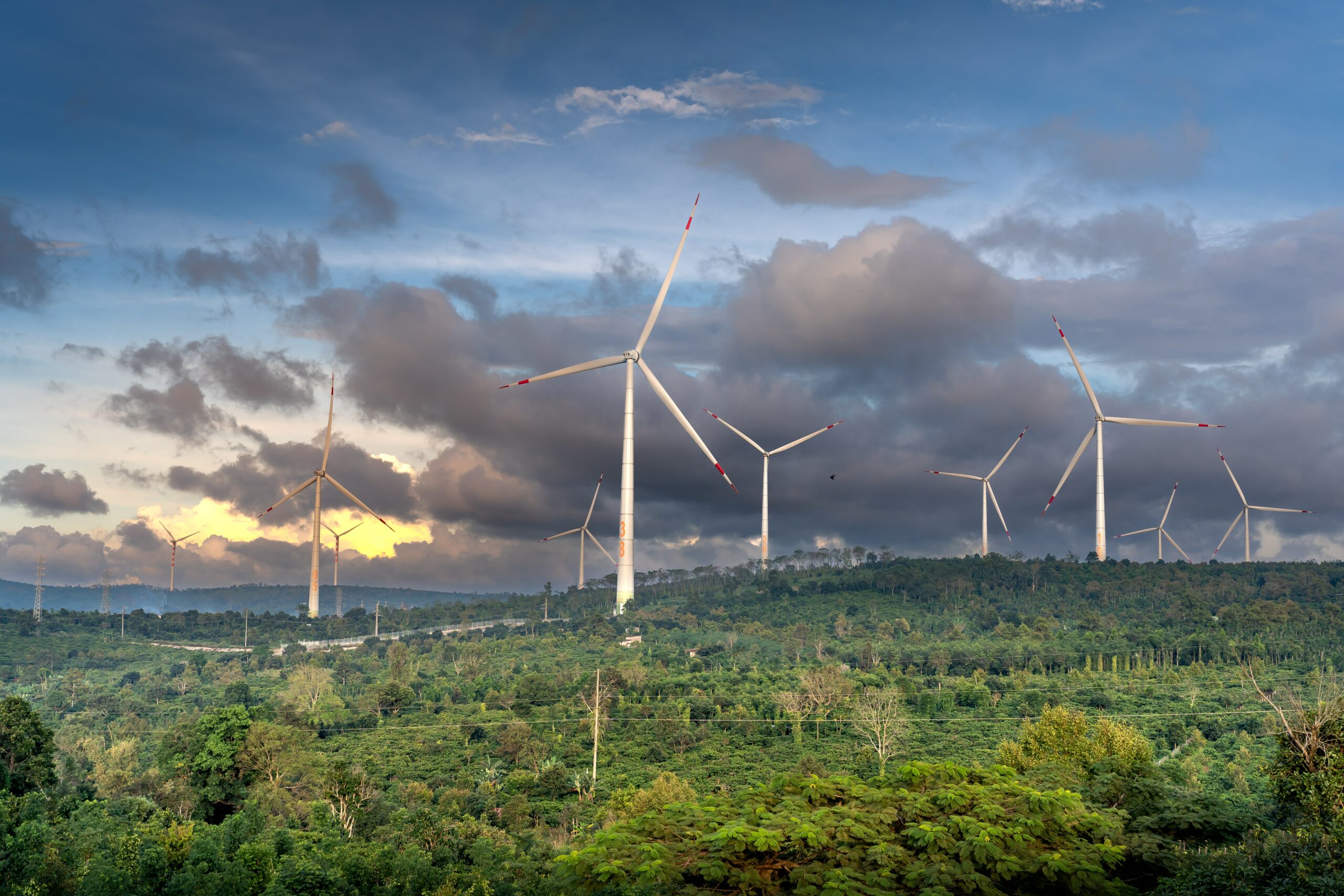China’s Investment in Africa
Africa’s population since 2010 has officially surpassed one billion[1]. It is projected to be more than two billion by 2050, and possibly more than four billion by the end of the century, almost as much as in Asia[2]. This demographic growth will likely produce a faster growing domestic demand which will also be supported by an increased purchasing power thanks to remittances from the diaspora. Indeed, in 2015 alone, African migrants sent home around 64.6 billion US dollars[3]. In the face of this challenge, the continent’s leaders understand that the private sector must play a forward-looking role. To facilitate that, African governments are making efforts to create a suitable environment for private sector-led activities and hence, encourage foreign direct investments (FDI).
On the other hand, over the past two decades, China’s robust economic growth and rapidly expanding presence in global markets have greatly intensified its trade ties with Sub-Saharan Africa. China’s remarkable 10 percent average growth rate between 2000 and 2012[4], has fueled a steadily rising demand for oil, minerals and other primary commodities, many of which are abundant in Sub-Saharan Africa. China has now become a major development partner for countries throughout the continent, and its trade, investment, diplomatic, and political relationships with Sub-Saharan African countries continue to strengthen.
FDI Trends in Africa
| Figure 1: FDI into Africa by capital investment 2015[5] | Figure 2: FDI into Africa by project numbers 2015[6] |
Foreign direct investments into Africa totaled $66.4 billion for a sum of 705 projects in 2015. Egypt was the number one destination for FDI into Africa in 2015, mostly thanks to ENI’s plans to invest between $6 billion and $10 billion in the Zohr gas field[7]. The top 10 destination countries for FDI into Africa account for 77 percent and 75 percent of FDI in the region as a whole, both by number of projects and capital investment respectively.
| Figure 3: Business activity breakdown of FDI into Africa by capital investment 2015[8] | Figure 4: Business activity growth trends for FDI projects in Africa 2015[9] |
Business Services, Sales, Marketing & Support and Manufacturing were the top three business activities for FDI projects into Africa in 2015. Despite being the fastest growing business activity by capital investment in 2014, the value of Extraction projects dropped 32 percent in 2015 to $15.1bn. Infrastructure-related business activities such as Electricity, Construction and ICT & Internet Infrastructure made up 13 percent of all projects into Africa and accounted for 44 percent of capital invested. Electricity, in particular, saw a 49 percent increase in capital investment and a 91 percent increase in project numbers[10].
| Figure 5: Sector breakdown of FDI into Africa by capital investment 2015[11] | Figure 6: Sector breakdown of FDI projects in Africa by project numbers 2015[12] |
Although concentrated in a few countries, Services FDI accounted for 48 percent of Africa’s total stock of FDI, more than twice the share of manufacturing (21 percent) and significantly more than the primary sector (31 percent)[13]. As in 2014, the Coal, Oil & Natural Gas sector ranked top for capital investment in 2015 with $15.7 billion invested. However, $12.2 billion was invested in Alternative/Renewable Energy. The clean energy sector saw a 23 percent increase in capital investment, whereas fossil fuel declined by 52 percent[14].
| Figure 7: Top investing countries in Africa by capital investment 2015[15] | Figure 8: Top investing countries in Africa by project numbers 2015[16] |
Italy was the top investor by capital investment in the region in 2015, with projects valued at $7.4 billion, $6 billion of which comes from ENI’s investments. Asian countries invested in 11 percent more African FDI projects in 2015. Key investors were India and China, with China accounting for a 3 percent market share and 4 percent of the number of all inward FDI projects. Despite China ranking 9th by capital investment and 7th by project numbers, it was the second most prolific job creator. In fact, China created 14,127 jobs across the continent in 2015[17].
China’s Outward Direct Investment (ODI)[18] in Africa
Much of China’s ODI in Sub-Saharan Africa is closely linked to trade. Official figures from the Chinese Ministry of Commerce (MOFCOM) suggest that ODI to Sub-Saharan Africa reached US $2.52 billion in 2012, and US $3.4 billion in 2013[20]. In 2012, the total stock of Chinese ODI was US $20 billion, yet this accounted for just 5 percent of the total inward foreign direct investment stock in Africa. Meanwhile, the importance of Sub-Saharan Africa and Africa as a whole in China’s total ODI stock remains below 5 percent and has not changed much since 2006. In other words, Africa has benefited from China’s rising ODI outflows, but no more so than other regions.
Indeed, Chinese investments have increased worldwide and mainly in Asia, China’s most important ODI recipient. This global trend is driven by the ambitious ‘One Belt, One Road’ (OBOR) initiative that would connect China, Europe and Africa. The initiative plans heavy investments in transportation infrastructure, mainly through Asia and eastern Europe. China’s ODI to countries along OBOR grew 23.8 percent year-on-year in 2015, and was up 60 percent year-on-year in the first half of 2016[21].
China’s economic involvement in Africa has taken many forms, and information about its financial and trade ties to the continent is not always easily comparable to that of other countries. While Official Development Assistance (ODA) is defined by the OECD to include grants, interest-free loans and concessional loans, Chinese ODA includes the use of financing mechanisms that are outside the OECD’s definition, such as export credits, natural-resource-backed credit lines, subsidies for private investment, and so-called “mixed credits,” which are combined concessional and market-rate loans. Therefore, African leaders and governments portray Chinese engagement in the region as positive because of China’s contribution to infrastructure which impacts the economy.Throughout Sub-Saharan Africa, China is investing most heavily in energy and the extractive industries, a pattern similar to its investment strategy in other parts of the world. In West Africa, however, Chinese ODI is unusually concentrated in the transportation sector. From 2005 to 2012, the West African transportation sector received 36 percent of China’s total ODI flows to the region, substantially higher the 14 percent average worldwide[23]. Transport equipment is overwhelmingly related to mineral extraction, a sector where Chinese firms are highly concentrated. Transportation was followed by the mining and metallurgy sector with 32 percent of total regional investment, also well above the 16 percent average worldwide. Energy attracted the third-largest share of Chinese ODI at 28 percent, lower than the 46 percent worldwide average.
One of the most critical questions facing African policymakers as a whole, and West African policymakers in particular, is how to maximize the benefits of their increasingly tight financial and trade integration with China. The expansion of natural resources sectors and the contraction or stagnation of the agricultural and industrial sectors are worrying signs of the Dutch disease effect[24]
Ultimately, many argued that China has been investing heavily in Africa, some even went as far claiming that the country has become the first source of FDI in the continent. It is true that Africa have benefited from a higher ODI inflow from China, however, it didn’t get more attention that other regions of the world, and the numbers are there to prove it.
“The bottom line is clear: by making Africa’s structural transformation open for business, the continent can do more with the private sector’s resources, ingenuity and innovation to drive productivity, growth and development. Doing so will improve the lives and prospects of Africa’s men, women and children. “
Mario Pezzini is director of the OECD Development Centre and acting director of the OECD Development Co-operation Directorate[25]
Disclaimer: Chinese official outbound direct foreign investment (ODI) statistics may be distorted by the presence of stop-over destinations such as Hong Kong and offshore centers in the Caribbean.
Sarah Nassiri, Analyst Intern at Infomineo. Learn more about Sarah.
[1] Source: The World Bank Database.
[2] Source: United Nations, Department of Economic and Social Affairs, Population Division (2015). World Population Prospects: The 2015 Revision. New York: United Nations.
[3] Source: The Africa Investment Report 2016 – Foreign Investment Broadens Its Base, fDiIntelligence.
[4] Source: The World Bank Database.
[5] Source: The Africa Investment Report 2016 – Foreign Investment Broadens Its Base, fDiIntelligence.
[6] Source: The Africa Investment Report 2016 – Foreign Investment Broadens Its Base, fDiIntelligence.
[7] Source: The Africa Investment Report 2016 – Foreign Investment Broadens Its Base, fDiIntelligence.
[8] Source: The Africa Investment Report 2016 – Foreign Investment Broadens Its Base, fDiIntelligence.
[9] Source: The Africa Investment Report 2016 – Foreign Investment Broadens Its Base, fDiIntelligence.
[10] Source: The Africa Investment Report 2016 – Foreign Investment Broadens Its Base, fDiIntelligence.
[11] Source: The Africa Investment Report 2016 – Foreign Investment Broadens Its Base, fDiIntelligence.
[12] Source: The Africa Investment Report 2016 – Foreign Investment Broadens Its Base, fDiIntelligence.
[13] Source: The Africa Investment Report 2016 – Foreign Investment Broadens Its Base, fDiIntelligence.
[14] Source: The Africa Investment Report 2016 – Foreign Investment Broadens Its Base, fDiIntelligence.
[15] Source: The Africa Investment Report 2016 – Foreign Investment Broadens Its Base, fDiIntelligence.
[16] Source: The Africa Investment Report 2016 – Foreign Investment Broadens Its Base, fDiIntelligence.
[17] Source: The Africa Investment Report 2016 – Foreign Investment Broadens Its Base, fDiIntelligence.
[18] Outward Direct Investment is very similar, but not identical, to foreign direct investment (FDI). As with FDI, ODI includes private financial flows; however, ODI also includes investments from state-owned companies.
[19] Source: The Impact of Rising Chinese Trade and Development Assistance in West Africa, Miria Pigato and Julien Gourdon, Africa Trade Practice Working Paper Series – Number 4, May 2014. The World Bank.
[20] Source: China’s growing ODI: Where does it all go? – Economic Analysis, Carlos Casanova, Alicia Garcia-Herrero and Le Xia, BBVA Research Department.
[21] Source: China’s ‘One Belt, One Road’ gains traction, Lan Shen, Standard Chartered – Economic Trends, December 2nd 2016 https://www.sc.com/BeyondBorders/one-belt-one-road-traction/
[22] Source: The Impact of Rising Chinese Trade and Development Assistance in West Africa, Miria Pigato and Julien Gourdon, Africa Trade Practice Working Paper Series – Number 4, May 2014. The World Bank.
[23] Source: The Impact of Rising Chinese Trade and Development Assistance in West Africa, Miria Pigato and Julien Gourdon, Africa Trade Practice Working Paper Series – Number 4, May 2014. The World Bank.
[24] Dutch disease is the negative impact on an economy of anything that gives rise to a sharp inflow of foreign currency, such as the discovery of large oil reserves. The currency inflows lead to currency appreciation, making the country’s other products less price competitive on the export market.
[25] Source: The Africa Investment Report 2016 – Foreign Investment Broadens Its Base, fDiIntelligence.
You may also like
Warning: Undefined variable $content in /var/www/sdomains/nexatestwp.com/infomineo.nexatestwp.com/public_html/wp-content/themes/infomineo/single.php on line 235
Warning: Undefined variable $content in /var/www/sdomains/nexatestwp.com/infomineo.nexatestwp.com/public_html/wp-content/themes/infomineo/single.php on line 235
Warning: Undefined variable $content in /var/www/sdomains/nexatestwp.com/infomineo.nexatestwp.com/public_html/wp-content/themes/infomineo/single.php on line 235
Warning: Undefined variable $content in /var/www/sdomains/nexatestwp.com/infomineo.nexatestwp.com/public_html/wp-content/themes/infomineo/single.php on line 235
Warning: Undefined variable $content in /var/www/sdomains/nexatestwp.com/infomineo.nexatestwp.com/public_html/wp-content/themes/infomineo/single.php on line 235
Warning: Undefined variable $content in /var/www/sdomains/nexatestwp.com/infomineo.nexatestwp.com/public_html/wp-content/themes/infomineo/single.php on line 235








